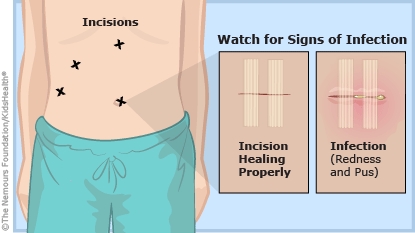Gallbladder problems can occur in healthy children. Most kids recover quickly after removal of the gallbladder and usually can go home the next day.


The gallbladder stores bile, which helps digest fat. If the gallbladder is inflamed or blocked by stones, children can develop fever, nausea, vomiting, belly pain, and trouble digesting fatty foods.
Some kids need their gallbladder removed (cholecystectomy) to make them feel better and to prevent any further problems. In those cases, surgery is done in the hospital under general anesthesia. Most surgeons use the laparoscopic technique in which the gallbladder is removed through small incisions. If there is difficulty removing the gallbladder, the surgeon might make a bigger incision. Once recovered from the surgery, your child can go home.
Some children experience right shoulder pain from the air that is put into the belly during the procedure, but the pain should go away on its own in a few days.
Occasionally, kids have pain or indigestion from eating fatty foods after the gallbladder is removed and may need to reduce the fat in their diet. If this occurs, your health care provider will provide dietary recommendations.



Your child: